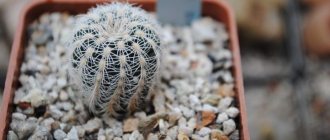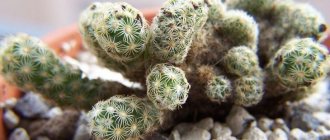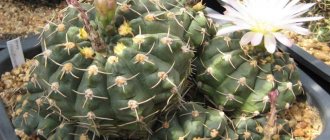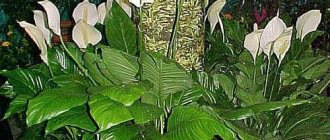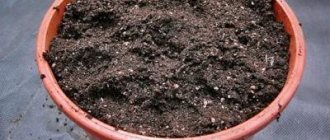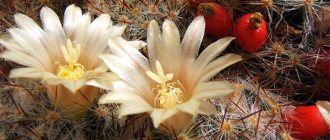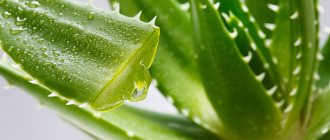Photo of the cactus Gymnocalycium is a charming cactus with a spherical stem and bright, beautiful flowers . Many gardeners prefer cacti due to the delicate charm of their needles and flowers. To make the plant comfortable, you need to know as much as possible about it and the rules of care in order to provide it with everything it needs.
- Origin: Gymnocalycium cactus is native to South America. It grows wild in Bolivia, Argentina and Brazil.
- Size: The name Gymnocalycium covers several different species, ranging in size from 3 cm to 30 cm.
- Flowering: Beautiful flowers appear regularly on flower tubes that have no hairs or spines on the surface. Almost all cactus species begin to bloom when they are 2 or 3 years old, starting in the spring and ending in the fall.
| The cactus has a slow growth rate. |
| Flowering begins in spring and ends in autumn. |
| The plant is easy to grow. |
| Perennial. |
Gymnocalycium stellate
The stem is dark green, regularly rounded, with spines peeking out from the fluffy areoles. The needles grow down and in different directions, which is why the cactus appears to be covered with stars.
In addition to the above-described species, Gymnocalycium Bruch, Small-flowered, Nude, Schroeder, Besa, Rubra and others are grown indoors.
Beneficial features
Gymnocalycium.
Photo Traditionally, they try to place this cactus closer to computers because they believe in its ability to absorb harmful radiation. This cactus has a beneficial effect on the atmosphere in the room, purifying the air and filling it with useful substances.
Sometimes cacti are even eaten, and various objects are also made from it, such as soap and deodorants.
Soil moisture
Watering Gymnocalycium correctly is not difficult - the principles apply to almost all plants living at home. It is irrigated as the soil in the pot dries. Watering should preferably be done with settled water heated at room temperature.
In summer, the plant is watered moderately but regularly, and from autumn to spring it is watered occasionally and little by little. It is important to take care of drainage, pour out excess liquid from the pan and allow the earthen clod to dry completely between waterings.
Botanical description of a houseplant
Gymnocalycium mihanovichii is a cactus of the genus Gymnocalycium. Argentina is considered the birthplace of the plant, although it is often found in other countries of South America.
Did you know? The name "Gymnocalycium" can be translated from Greek as "bare cup", which essentially describes the appearance of some subspecies of this genus, whose stems are not covered with spines and are cup-shaped.
The cactus has a slightly flattened spherical stem up to 5 cm high and up to 6 cm in diameter. The color of the stem is reddish-brown with large smooth ribs of a triangular cross-section. On the ribs there are gray-silver, slightly curved spines.
Flowering of the plant usually occurs when it reaches two years of age or later. The process begins during the growing season, in the spring, and can last until the beginning of winter. Flowers about 3 cm in diameter appear on the top of the cactus, blooming from calyxes produced by the plant.
The inflorescences are funnel-shaped (bell-shaped), usually yellowish or pale pink.
Reproduction and replanting at home
Gymnocalycium can be propagated by seeds and vegetatively.
When propagated by lateral layering, the grown shoot breaks off or is unscrewed from the mother trunk. The cut site is dried, then the shoot is placed vertically in damp soil. A small cactus takes root after 7-14 days.
Sometimes cuttings have their own roots intertwined with the root system of the mother. In this case, the roots of the shoot are carefully dug out and it is planted in a separate pot.
What is Gymnocalcium mix and how to create a composition?
A bizarre combination of round small cacti in one pot is known as Gymnocalycium mix. The variety of colors of stems, their shapes, and the riot of colors of flowering cacti look incredibly attractive and impressive.
When creating a composition, cacti with a diameter of no more than five centimeters are usually used. They combine round and elongated species, grafted, blooming in different shades. Caring for such a composition is the same as caring for an individual cactus.
To create a spectacular composition, the types of Mikhanovich and Friedrich are most often used. The first ones are miniature, the second ones amaze the imagination with their bright and unconventional colors for a cactus.
Plant the plants in one pot, trying to place them at a certain distance from each other - up to 2-3 centimeters. When the time comes, they can be moved to a larger pot.
Propagation by seeds
Propagation by seeds is more troublesome, but gives better results. With this method, it is more likely to get strong and healthy offspring.
The container for planting is small and shallow. It is important not to let the soil dry out. To maintain moisture, the pot must be covered with a transparent lid or film and placed in a sunny place. Every day you need to ventilate the ground for 10-15 minutes and wipe off any condensation that has formed from the film.
Shoots appear quite quickly - after 2-3 weeks. You can transplant grown plants into separate pots when they acquire their own thorns.
If the requirements for light and heat are met, seeds can be planted at any time of the year.
Popular types
The varieties of this indoor flower differ not only in flowering and growth details, but also in the color of the stems.
The unusual effect is achieved due to the absence of chloroform.
The first example of selection with this property was Gymnocalycium Mihanovich. Its mutations are grafted onto other cacti, since they are not able to survive on their own.
Today, Gymnocalycium Salona, Horst, red-flowered Rubra, Vatteri, Gymnocalycium Damsi and many other varieties are very popular.
Gymnocalycium glabrous
The specimen, which has pot-bellied sides and wide edges with sparse inflorescences of needles, can often be found on the window of cacti lovers. It is called Gymnocalycium naked or Denudatum.
In April, buds of white or soft cream color appear on the top of the head. This phenomenon is observed in the second or third year after planting. The flower is located in the center and looks quite large.
Gymnocalycium Michanovich
The trunk of the plant has a spherical shape, covered with gray thorns . This variety can be grafted onto any other slow-growing cactus.
Its flowers are white, yellowish, greenish and pink, growing up to seven centimeters in diameter.
Salyo
The grayish-green ball is covered with needles reaching 4 cm in length.
The species itself, which is also called Gymnocalycium Saglionis, is also very large, measuring 30 centimeters in size . During the flowering period, the top is covered with snow-white flowers with many petals.
Gymnocalycium humpback
This variety is characterized by the presence of a long peduncle with a light-colored flower.
The stem itself is dark, blue-green with the same bluish long needles growing straight. The diameter of the plant can reach fifty centimeters.
Gymnocalycium Quelya
This variety is small in size.
The maximum size that Quelya reaches is 10 centimeters; the plant is characterized by a spherical shape . The flower colors of the plant are noteworthy: the white petals, arranged in two rows, contain a core surrounded by a red stripe.
Mix
This red and yellow-headed cactus is even smaller: only 5 centimeters in diameter.
The flower palette is presented in a variety of options. You can find white, pink, red, lilac, purple petals and more.
Gymnocalycium Balda
On the wide edges of the bluish tint of the Baldianum cactus there are neat centimeter-long spines.
The plant's flowers come in various shades of red. Gymnocolicium Balda has the shape of a ball with a diameter of 10 cm, on which inflorescences grow 5 centimeters in size.
Erinaceum
The height of this type is 50 mm. The twelve grayish edges are initially covered with a kind of fur, but after a while they become bare.
It has white or pinkish, funnel-shaped flowers. With age, the dark brown spines of Erinaceum become whitish.
Gymnocalycium Anisitsi
The flowering period of the variety Gymnocalycium Anizitsi lasts from April to September.
At this time, you can see small white flowers on this compact ball. It grows wild in Paraguay. Over time, the top lengthens a little and stretches out.
Spiny elements can reach from one to six centimeters. This varietal crop is characterized by high variability within its species: depending on the growing conditions, the height, shape, and length of the thorns change.
Ragonese
This variety, Gymnocalycium Ragonese, is the smallest in the genus . Its height is 2.5 centimeters.
The skin of the plant is brown; white inflorescences grow on peduncles elongated to five centimeters. Thin and small spines are pressed against the stem.
Gymnocalycium Andre
In nature, this species grows in the north of Argentina.
It is distinguished by its rich dark green color and yellow silk flowers, which are quite rare in this genus. The epidermis is soft to the touch, there are few spines.
Star-shaped
The variety has relatively flat edges separated by grooves.
The skin color varies from dark, grayish tones to yellowish, olive colors. Cream flowers have many stamens and a reddish base. The growth of this subspecies is very slow: it grows only less than 1 mm per year.
Gymnocalycium Friedrich or Japanese
The Gymnocalycium Friedrich cactus has almost triangular, pointed ribs.
Another name for the cactus: Japanese gymnocalycium, because it was the scientists of the Land of the Rising Sun who bred this mutation through crossing. The color of the petals is lilac or pink, and the stem is brown with a reddish tint.
Schroeder
The variety has a flattened shape: at 5 centimeters in height, it spreads 15 cm in width.
The buds are characterized by creamy shades.
Gymnocalycium multiflorum
A distinctive feature of the subspecies are long, protruding needles, giving the plant a tousled appearance.
The crown is covered with several four-centimeter pinkish flowers.
Transfer
Replanting should be done as the shoot grows, choosing the next pot a little larger than the previous one. In addition, replanting will be necessary if the roots rot. A young plant develops faster, so it can be moved to a new pot every year, then this will be required every 2-3 years. It is advisable to change the pot in the spring.
Before planting, the roots are carefully cleaned of remaining soil, washed with hot water and dried for 2 days. Then the plant is placed in fresh substrate. The pot is selected taking into account its ability to drain excess liquid. The cactus is placed in unmoistened soil and watered after a couple of weeks.
In case of diseases of the root system, the damaged pieces are first removed.
If the plant has flowers, then its habitat is changed after they dry.
Landing
To plant a cactus, you need to purchase a small pot made of plastic or ceramic. It must have holes for drainage. Large containers for gymnocalycium are not suitable, since the plant needs to feel the walls of the pot with its root system.
You can prepare the soil yourself by combining the following components:
- 3 parts each of leaf soil and sand;
- 2 parts each of turf soil and peat;
- 1 part crushed charcoal.
The soil for Gymnocalycium should be neutral or slightly alkaline, since the cactus does not tolerate acidic soil.
Ready-made soil for cacti can be purchased at a flower shop. Before planting, it is necessary to place a layer of drainage on the bottom of the pot and only then fill it with soil.
Diseases and treatment of Gymnocalycium
To protect your plant from diseases and pests, you need to avoid drafts, high humidity, and excessive watering.
The main disease of Gymnocalycium is root rot. This problem occurs when the watering regime or temperature conditions are not observed, or the soil is too fertile.
To fix the problem, you need to rinse the roots with warm water and cut off the affected fragments. Healthy parts should be sprinkled with ash or crushed coal, allowed to dry for several days and returned to the soil.
The main pests of this cactus are red flat mites and mealybugs.
Grafting of chlorophyll-free cacti
As already mentioned, in order to get red, pink or yellow gymnocalycium, you need to graft a scion onto a green cactus. Sometimes the procedure is done not for the sake of beauty, but to save a specimen affected by root rot. Gymnocalycium Mihanovich is usually used as a rootstock.
For this you need a healthy plant with strong roots. In the upper part of this rootstock, a horizontal cut is made to the size of the same cut on the scion. They must match completely. Instruments that will be manipulated must be disinfected. The plants are connected by cuts and pressed tightly against each other. The position is fixed using a bandage and weights. Splicing will take about a week, but no more than 10 days. After this, the fixing bandage can be removed.
Unfortunately, grafted hybrids are very short-lived.
Other varieties of cacti can be used as a scion.
Red flat tick
The red flat mite manifests itself by the presence of rust-colored spots on the body of the trunk; the insect itself is very difficult to see. This mite is not found often because the skin of the cactus is too thick for it. Young shoots with thin, immature epithelium are susceptible to tick attack.
The fight against it is very simple - you need to wash the stems with very warm water or treat it with ethyl alcohol. Pesticides should only be used as a last resort.
More about the flower
This representative of cacti has several varieties. They differ in size, which varies between 2.5-30 centimeters. Gymnocalycium cactus can have a round or flat-spherical stem. The apical flowers with an elongated tube, which are devoid of hairs or spines, are covered with smooth scaly leaves. As a rule, cacti begin to bloom in the third or fourth year. The flowering period occurs at the beginning of spring and ends in autumn. Inflorescences are presented in a variety of shades.
Mealybug
This pest settles on stems and roots. It can be seen with the naked eye - it has a pinkish body covered with an airy layer similar to cotton wool, leaving behind a white coating. A sign of infestation by this worm-like pest will be stunted growth and lack of flowering.
To get rid of these parasites, it is enough to wash the entire plant with roots with hot water or use universal preparations to combat the pest.
Gymnocalycium, with proper care, can become an interior decoration. After all, it has an incredible range of shades, decorative appearance, beautiful flowering and unusual shapes.
This cactus does not require special skills in growing indoor plants; you just need to follow the rules of lighting, watering and temperature conditions - even a beginner can handle it. As a result, Gymnocalycium will delight its owner with beautiful flowers and unusual appearance.
Conditions of detention: table by season
Gymnocalycium is an unpretentious plant, but it also requires the creation of minimal conditions that vary depending on the time of year.
| Season | Temperature | Lighting | Accommodation |
| Spring and summer | Optimal temperature – +20… 30°C | The cactus requires a lot of light, but it needs to be shaded from the sun's rays to avoid burns. | It is advisable to take the pot out onto the terrace or balcony on warm days |
| Autumn | It is advisable that the thermometer does not fall below +20°C | During this period, the plant does not need to be shaded. | South window sill |
| Winter | The room temperature should be within +9… 15°C. The minimum temperature during this period is -8°C (it is impossible to keep the cactus in such conditions for a long time) | Additional artificial lighting should be provided | Move the cactus to a cool and dry place (insulated loggia). If the frosts are severe, then you need to bring the pot into the room, but place it away from heating appliances |
Gymnocalycium is completely undemanding when it comes to humidity. The plant tolerates dry air well and does not need spraying. At home, the cactus must be protected from drafts, which negatively affect its growth.
Recent Entries
Lilac perennials that are beautiful, compact and do not crowd out other plants Why when buying seedlings you should not take the sellers’ word for it and how to determine the age of the plant using 3 signs Tomato seedlings have turned purple or whitish: why the color has changed and how to save the plants
